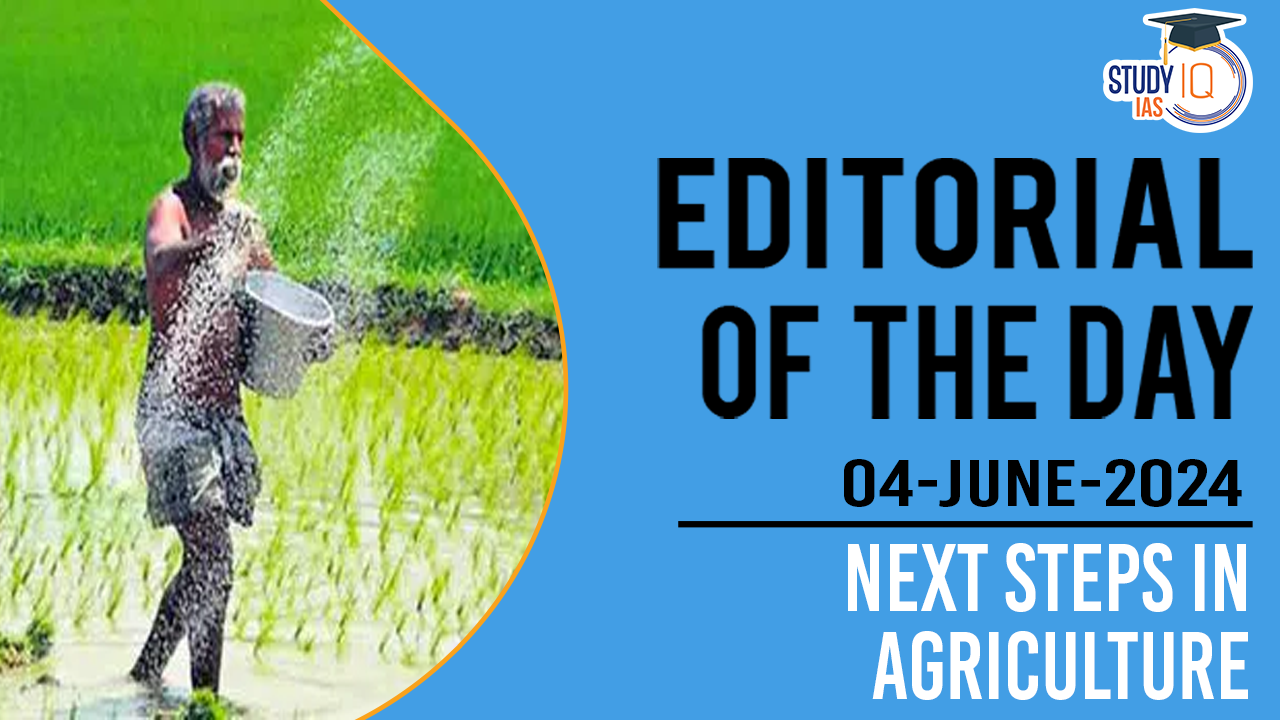Table of Contents
Context: As India makes its way to Amrit Kaal, the agriculture sector will face numerous hurdles.
Challenges in Agricultural Sector Landscape
- Climate Change: Erratic weather patterns and extreme events are increasingly disrupting crop production and livelihoods.
- Example: Rainfed agriculture primarily impacted due to rainfall variability and reduction in the number of rainy days.
- World Trade Organization (WTO) and subsidy issue: The WTO’s rules, particularly those related to agricultural subsidies and trade barriers, limit India’s policy options and may lead to unfavourable rulings in trade disputes.
- India’s support programs, particularly for commodities like cotton, sugar, wheat, and rice, have faced challenges at the WTO.
- Example: India’s sugar policy was brought into question, leading to a dispute where the country’s practices were scrutinised for potentially violating WTO agreements
- Small Land Holdings: With 85% of arable land fragmented into small plots, it’s difficult for farmers to achieve economies of scale and earn a decent income.
- Global Focus on Low Food Prices: This prioritisation artificially suppresses farm-gate prices, making farming economically unsustainable.
- Depleting Aquifers: Over-extraction of groundwater for irrigation is jeopardising future agricultural productivity and access to drinking water.
- Example: According to the Interconnected Disaster Risks Report 2023, 78% of wells in Punjab are considered overexploited and the northwestern region as a whole is predicted to experience critically low groundwater availability by 2025.
Internal Challenges
- Research and Extension: Investment in agricultural research and extension services has declined in real terms, despite high returns on investment.
- Unfair Markets: Agriculture markets are inherently biased against farmers. States often prioritise populist measures over long-term investments, and artificially low prices through the public distribution system further depress farm-gate prices.
- Input Subsidies: Skewed fertilizer subsidies encourage overuse, harming both human health and the environment.
- Public Debt: High debt levels limit the government’s ability to invest in agriculture and provide further subsidies.
- Governance and Accountability: Inept governance and a lack of accountability in agricultural ministries hinder progress.
Way Forward
The focus should shift from merely increasing agricultural productivity to ensuring that productivity gains are sustainable, equitable, and benefit all farmers. This requires:
- Increased Investment in Research and Extension: Reversing the decline in funding and prioritising research that addresses climate change and sustainable practices.
- Reforming Agricultural Markets: Addressing market distortions, ensuring fair prices for farmers, and promoting sustainable production methods.
- Addressing Subsidy Distortions: Rationalising input subsidies and promoting balanced fertilizer use.
- Fiscal Responsibility: Managing public debt to create fiscal space for long-term investments in agriculture.
- Improving Governance: Ensuring accountability, transparency, and competence in agricultural policy making and implementation.


 GPS Spoofing and Its Impact in India: A ...
GPS Spoofing and Its Impact in India: A ...
 Amrit Gyaan Kosh Portal: A Comprehensive...
Amrit Gyaan Kosh Portal: A Comprehensive...
 UpLink Initiative: Launched by World Eco...
UpLink Initiative: Launched by World Eco...





















